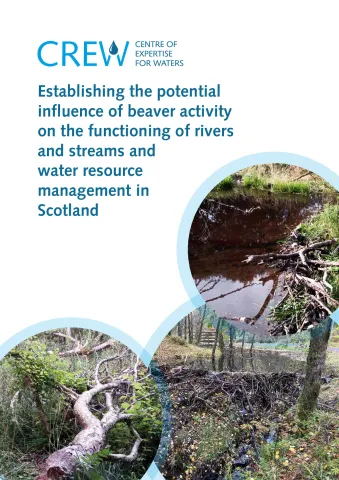Beavers are well known for their ability to transform the environment through dam building and other activities. This report provides an evidence review of the role of beavers in modifying physical processes, and the potential benefits they may bring for Scottish rivers, streams and water resources. It will inform the dialogue on the benefits and limitations of beaver expansion in Scotland, including where trade-offs are required.
The work involved two main ways of capturing evidence. Firstly, an international literature review was carried out that collected quantifiable evidence on the effects of beaver dam building on water quantity and quality and the geomorphological characteristics of rivers and streams. Confidence levels for the evidence of effects were determined based on the amount of evidence and the level of agreement between different evidence sources. Secondly, a group of beaver experts worked together to discuss and interpret the findings of the literature review, and to collectively identify remaining knowledge gaps.
Most of the evidence of beaver activity effects on streams and rivers points to positive contributions to local ecosystem services, including water supply and purification, wetland creation and river restoration. Enabling these and other positive contributions may also involve compromises and care must be taken to manage any disbenefits, such as local loss of land. The majority of evidence has been recorded at the local scale (up to 1km2) and more work is required to establish the effects of beaver dam building activities at larger scales. The review also highlighted a lack of knowledge on the site-specific controls on the magnitude of beaver effects, which limits transferability of observed effects to other sites with different characteristics. Addressing these gaps requires more empirical research supported by modelling. Recommendations based on the outcomes of the report also include that the potential for beaver activity to contribute to ecosystem services should be considered in relevant riparian management appraisals. However, discussion with landowners and wider societal groups is required to inform such appraisals and mitigate local adverse effects of beaver activity.
Key findings from the project are summarised in the Policy Note.
| Attachment | Size |
|---|---|
| CD2020_02 Main Report | 2.79 MB |
| CD2020_02 Appendices | 3.6 MB |
| CD2020_02 Summary Report | 1.24 MB |
| CD2020_02 Policy Note | 1000.4 KB |
